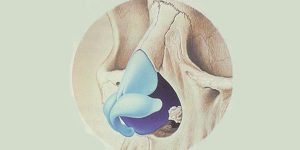polyps in the nose

Please explain about the polyps in the nose and breathing problems.
Nasal breathing problems can have many causes. However, the long-term respiratory problems in the nose are due to two reasons. The more common cause is nasal allergies, which can be accompanied by sneezing and rhinorrhea that sometimes occurs just as stuffy nose. Usually, it is bilateral; but sometimes, one side and sometimes the other side is involved. It often recur seasonally and in warm seasons; but sometimes, it is there all year long. The long term allergy that is not treated well causes the enlargement of redundancies in the nose called nasal turbinates. Allergies should be usually controlled with medication or improved somewhat with vaccination. However, in case of occurring permanent turbinate enlargement complication, drug treatment may not be enough and turbinate surgery would be needed. The turbinates normally exist in the nose and adjust the passage of air through the nose by intermittent shrinking and enlarging as a thermostat to thereby control the quality, humidity and temperature of the air entering the airways. Thus, they alternately keep one nostril in one side more open and the other more closed. One or two hours after, they switch the nostrils, which may be necessary for the intermittent resting of each of the nasal cavities.|پ
However, the patients with nasal allergies should be reminded that although sometimes operating on nasal septum associated with rhinoplasty would have a positive effect on allergies, but allergy mechanism is rooted in the blood cells. In other words, the root of casing nasal allergies is in the blood and they only manifest in the nose. As a result, the surgery does not affect allergy correction. In some cases, it may aggravate allergies for some time after the surgery. Allergies are usually treated with medicine, and the treatment should be done sometimes more powerfully up to a year after the surgery and even longer.

The next most common cause of nasal obstruction is nasal internal septum deviation that usually causes one-sided stuffy nose. It is rarely a bilateral obstruction. However, even in unilateral cases, the patient may be sometimes unable to detect the obstructed side correctly. The treatment of nasal septum deviation is septoplasty that can be done alone or in conjunction with rhinoplasty. Nasal polyps is not a common disease. In addition to surgical treatment, it is usually treated by medicines. However, most patients suffering from internal nasal septum deviation mistakenly think to have nasal polyps. Thus, even the doctors tell those with chronic obstructive pulmonary disease that they have nasal polyps instead of the accurate diagnosis. Perhaps, this common mistake by patients is caused by this issue.
For Appointment and advice please contact us.
+9821-22725195 +9821-22725171 Contact Us
